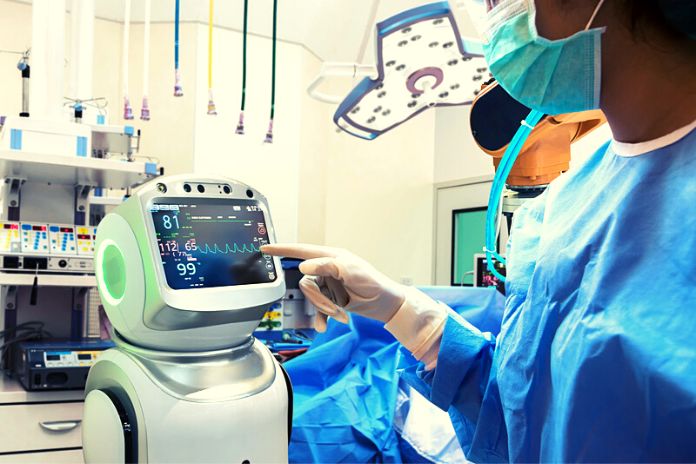Robotic Medicine: Imagine a world where machines do everything for you. Doing robotic medical procedures will become commonplace. They say that in the future, it will be like this, everything will be automated.
But the future is not far away, in 5 minutes it will be the future, and you will have read this article, right? The end is made from now.
What Are The Benefits Of Robotic Surgery?
When the machine performs 360º movements, it improves performance during the surgical procedure, and the patient can recover faster, so the “robot” can reach parts that no human being could.
In addition, because of this efficiency, blood loss, duration of the surgical procedure, and risks are reduced. Do you know those substantial surgery marks? Well, with innovations in medicine, it is proven that the effects are more minor precisely because there are fewer cuts and it is not so invasive.
Due to the Full HD 3D images, the doctor can drive the machine to the point of performing the surgery more effectively, with fewer cuts, and in a less invasive way. It is noteworthy that the surgical procedure is not performed autonomously.
Thus, the surgeon serves as a guide to carry out movements that can reach 360º. Therefore, the doctor’s work remains essential.
After All, Is It Correct To Call This Procedure Robotic Surgery?
Some scientists might say yes, and some might say no, because it’s human life at stake, so there’s no full automation right now. However, someday we will have a robot capable of performing surgery independently.
Thus, it is necessary to have trained professionals aligned with the machines, both doctors and nurses. Only some people can operate the equipment, and it is mandatory to undergo a lot of training.
Is It Possible To Do Telesurgery?
With the advent of the internet and the impacts of the pandemic caused by COVID-19, remote consultations (telemedicine) have become more common. However, many people need to learn that it is also possible to perform Telesurgery.
Telesurgery is performed under the supervision of a doctor who will monitor the entire process while the surgeon operates the machine from a distance. The doctor present serves to intervene in case there are any complications.
It is worth noting that this type of surgery at a distance is more frequent in places where no professionals are trained to perform robotic medicine.
Advances in medicine are notorious when performing more complex procedures, such as surgeries and medical examinations.
Which Procedures Are Highly Successful?
In heart surgeries, the benefits are not so evident; on the other hand, it is a highly successful procedure in lung cancer where the Da Vinci XI robot from the Mater Dei Health Network (Belo Horizonte, MG) is used.
Several specialties in robotic medicine can be practical; through procedures to eradicate prostate cancer, it is possible to reduce the risks of urinary incontinence and impotence.
In addition, it is possible to identify gynecological cancer using infrared radiation called Firefly. Therefore, the techniques used are of the highest level, being able to reach several axes and facilitate the entire process of the operation and post-surgery.
Proven Security
To ensure that the surgery has the expected result, it is necessary to carry out the Safe Surgery Protocol, which consists of determining measures to reduce possible accidents during the practice of medicine.
The doctor does not have to worry about hand tremors, excessive hours, or severe complications in robotic surgery.
However, if something goes wrong with the doctor operating the machine, the robot automatically stops working, as it is programmed to prevent incidents from happening.
Through Artificial Intelligence (AI), information about patients is stored to accurately monitor and cross-reference the data. It is possible to send this data to relatives and doctors.
Robotic Medicine As A Source Of Innovation
The impacts of technological innovations are increasingly evident, so it is possible to see significant advances in many areas. In medicine, creation represents how much we have evolved.
For example, we have Virtual Reality (VR), which has been considerably encouraged in the training of physicians, as it guarantees more excellent safety and precision for the practice of students.
Virtual Reality in medicine can be used in psychiatric consultations, training (e.g., surgeries, medicine classes…), and treatments for phobias and disorders.
In addition to VR, IoT in medicine relies on technologies that enable the transmission of videos and audio in real-time. Such resources eliminate the distance and allow a doctor to participate, for example, in a meeting or a lecture from anywhere.
Also Read: Researchers Discuss The Future Of Robotics

